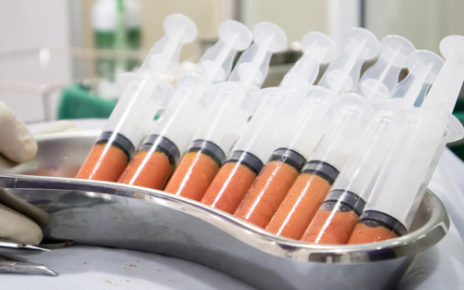Proteins have a sequence of amino acids. The number of amino acids and their way of linking determines the structure and functionality of proteins. The DNA and RNA molecules contain information on the sequence of amino acids required for a particular protein. The stretch of the nucleic acid that has the instructions for protein synthesis is the gene. Before moving to the applications of protein expression, here is a brief of the protein synthesis process.
Protein Synthesis
Natural protein synthesis in living cells consists of two steps. The first process is transcription. Here coding messages from DNA get copied to the messenger RNA. In the second step, called translation, the transcribed mRNA aids in the formation of a polypeptide chain. The mRNA moves to the ribosome of the cell. Here the tRNA (transfer RNA) brings an amino acid corresponding to the codon in mRNA.
Once there is a link between adjacent amino acids, the tRNA releases itself from the mRNA. Proteins thus formed play vital roles. We can classify proteins into antibodies, hormones, enzymes, body-building substances, etc. The multiple uses of proteins make them an attractive component for research and production.
Once the scientists identify the constituent amino acids and their structural folding in a protein, they can synthesize them in external cells with the help of an expression vector. The proteins thus formed are recombinant proteins, and the method is protein expression. Protein expression service is one of the main bio-pharma industrial activities.
Protein expression systems:
Protein expression involves introducing a DNA vector with protein-specific genes into the host cells. The next step is to utilize the transcription and translation machinery of host cells. Then host cells are lysed to obtain the proteins produced. The DNA synthesis happens in vitro, whereas the protein expression happens in various living cell systems such as mammalian, insect, algal, bacterial, and yeast. Below we list the applications of the recombinant proteins obtained through expression systems.
Antibody Production
Recombinant proteins obtained using protein expression systems are suitable for antibody production. After the lysis of host cells, the protein undergoes purification. The purified proteins are better than the short peptides for generating immune responses. The testing begins by inoculating animal cells with the protein. The amount of protein required depends on the size of the animal. The advantage with proteins is they have more immunogenic sites and thus help in boosting up the immunity level.
Protein interactions:
Protein interactions are crucial for various cellular processes. To study the same, scientists immobilize the recombinant proteins on a slide. Then, they treat it with different molecules like peptides, lipids, nucleic acids, and other proteins.
One can find various properties like binding affinity, protein modifications, antibody specificity, etc. Techniques used for the study are immunoprecipitation, surface plasmon resonance, and isothermal calorimetry.
Biological research:
Cellular level activities such as metabolism, cell signaling, growth, replications involve the interaction of proteins. The nucleic acids have the info on the actions to be taken, and it is the proteins that implement. Therefore, laboratory experiments regularly use proteins to study signaling, immune responses, effects of mutation, etc. It is possible to modify the proteins obtained from expression systems. Therefore, scientists use such proteins for studying the modification effects and enhancing their activities.
Proteins in medicine:
Diseases such as diabetes, cancer, hemophilia, anemia occur due to cellular level malfunctions. It can be due to excess or underproduction of enzymes, hormones, etc. The synthesized proteins can act as regulatory substances and bring back the equilibrium state. Regulation of sugar levels in diabetic people is an example of the regulatory role of pharmaceutical proteins. These can also work as anticoagulants and have an essential role in preventing myocardial diseases.
All big pharma companies research the use of recombinant proteins as vaccines and drugs. The US Food and Drug Administration agency has approved around 130 RP drugs for clinical use. Vaccines against Hepatitis B virus and human papillomavirus are some of the examples.
Applications in diagnostics:
Diagnostic tests like the Western blot and Elisa utilize the proteins obtained from the expression system. Western blots are for detecting the presence and quantity of proteins like antibodies. Hence, one can determine the infection stage.
Enzyme-linked immunoassay (Elisa) has multiple applications. Early detection of cancer, pregnancy, antibodies, food allergens, and drug testing are some of the applications of Elisa testing.
Final thoughts
Simulation of the natural protein expression process is one of the breakthrough inventions in biotechnology and medicine. Today, it is a billion-dollar business and has vital applications in genetic research, diagnostic techniques, and therapeutics. The recombinant proteins are cheaper and easier to produce. Once the gene sequence is known, it is easy to alter the function of proteins. Scientists can change its binding affinity, enzymatic reactions, etc. Thus, they have taken up multiple research activities to utilize recombinant proteins to enhance food production, animal breeding, etc. The recombinant proteins occupy an irreplaceable position in biological research and applications.



